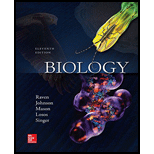
How is the digestion of fats different from that of proteins and carbohydrates?
a. Fat digestion occurs in the small intestine, and the digestion of proteins and carbohydrates occurs in the stomach.
b. Fats are absorbed into cells as fatty acids and monoglycerides but are then modified for absorption; amino acids and glucose are notmodified further.
c. Fats enter the hepatic portal circulation, but digested proteins and carbohydrates enter the lymphatic system.
d. Digested fats are absorbed in the large intestine, and digested proteins and carbohydrates are absorbed in the small intestine.
Introduction:
In the digestion all the food ingested is broken down to smaller absorbable forms. These are then absorbed into blood or lymph and carried to the rest of the body according to the requirements.
Answer to Problem 1U
Correct answer:
Fat absorption is different from the absorption of proteins and glucose. Therefore, option b. is correct.
Explanation of Solution
Reason for the correct statement:
Fats consumed normally are triglycerides. These are digested broken into the constituent fatty acids and glycerol molecules. These smaller parts diffuse into the epithelial cells lining the interior of the small intestine. Here they combine together again and a protein is added too to make chylomicrons. Chylomicrons then enter the lymphatic system instead of the hepatic portal system.
Option b. is given as “Fats are absorbed into cells as fatty acids and monoglycerides but are then modified for absorption; amino acids and glucose are not modified further”.
As, “the digestion of fats differ from that of proteins and carbohydrates because fats are taken into absorptive cells as fatty acids and glycerol which are then modified to chylomicrons for absorption but amino acids and glucose are not any modified further”, is the right answer.
Hence, option b. is correct.
Reasons for the incorrect statements:
Option a. is given as “Fat digestion occurs in the small intestine, and the digestion of proteins and carbohydrates occurs in the stomach”.
Fats, proteins and carbohydrates are all digested in the stomach as well as the small intestine. So, it is a wrong answer.
Option c. is given as “Fats enter the hepatic portal circulation, but digested proteins and carbohydrates enter the lymphatic system”.
Digested fats go into the lymphatic system and digested polypeptides (proteins) and sugar (carbohydrates) go into the hepatic portal circulation, not the other way around. So, it is a wrong answer.
Option d. is given as “Digested fats are absorbed in the large intestine, and digested proteins and carbohydrates are absorbed in the small intestine”.
Digested fats are also absorbed in the small intestine along with the digested carbohydrates and proteins. So, it is a wrong answer.
Hence, options a., c. and d. are incorrect.
A fat molecule is digested into the constituent three chains of fatty acids and one glycerol molecule which reassemble in the epithelial cells that line the lumen of small intestine and aggregate with proteins to form chylomicrons that enter the lymphatic circulation.
Want to see more full solutions like this?
Chapter 47 Solutions
Biology
- What is behavioral adaptarrow_forward22. Which of the following mutant proteins is expected to have a dominant negative effect when over- expressed in normal cells? a. mutant PI3-kinase that lacks the SH2 domain but retains the kinase function b. mutant Grb2 protein that cannot bind to RTK c. mutant RTK that lacks the extracellular domain d. mutant PDK that has the PH domain but lost the kinase function e. all of the abovearrow_forwardWhat is the label ?arrow_forward
- Can you described the image? Can you explain the question as well their answer and how to get to an answer to an problem like this?arrow_forwardglg 112 mid unit assignment Identifying melting processesarrow_forwardGive only the mode of inheritance consistent with all three pedigrees and only two reasons that support this, nothing more, (it shouldn't take too long)arrow_forward
- Oarrow_forwardDescribe the principle of homeostasis.arrow_forwardExplain how the hormones of the glands listed below travel around the body to target organs and tissues : Pituitary gland Hypothalamus Thyroid Parathyroid Adrenal Pineal Pancreas(islets of langerhans) Gonads (testes and ovaries) Placentaarrow_forward
 Medical Terminology for Health Professions, Spira...Health & NutritionISBN:9781305634350Author:Ann Ehrlich, Carol L. Schroeder, Laura Ehrlich, Katrina A. SchroederPublisher:Cengage Learning
Medical Terminology for Health Professions, Spira...Health & NutritionISBN:9781305634350Author:Ann Ehrlich, Carol L. Schroeder, Laura Ehrlich, Katrina A. SchroederPublisher:Cengage Learning Essentials of Pharmacology for Health ProfessionsNursingISBN:9781305441620Author:WOODROWPublisher:Cengage
Essentials of Pharmacology for Health ProfessionsNursingISBN:9781305441620Author:WOODROWPublisher:Cengage Human Biology (MindTap Course List)BiologyISBN:9781305112100Author:Cecie Starr, Beverly McMillanPublisher:Cengage Learning
Human Biology (MindTap Course List)BiologyISBN:9781305112100Author:Cecie Starr, Beverly McMillanPublisher:Cengage Learning Comprehensive Medical Assisting: Administrative a...NursingISBN:9781305964792Author:Wilburta Q. Lindh, Carol D. Tamparo, Barbara M. Dahl, Julie Morris, Cindy CorreaPublisher:Cengage Learning
Comprehensive Medical Assisting: Administrative a...NursingISBN:9781305964792Author:Wilburta Q. Lindh, Carol D. Tamparo, Barbara M. Dahl, Julie Morris, Cindy CorreaPublisher:Cengage Learning





